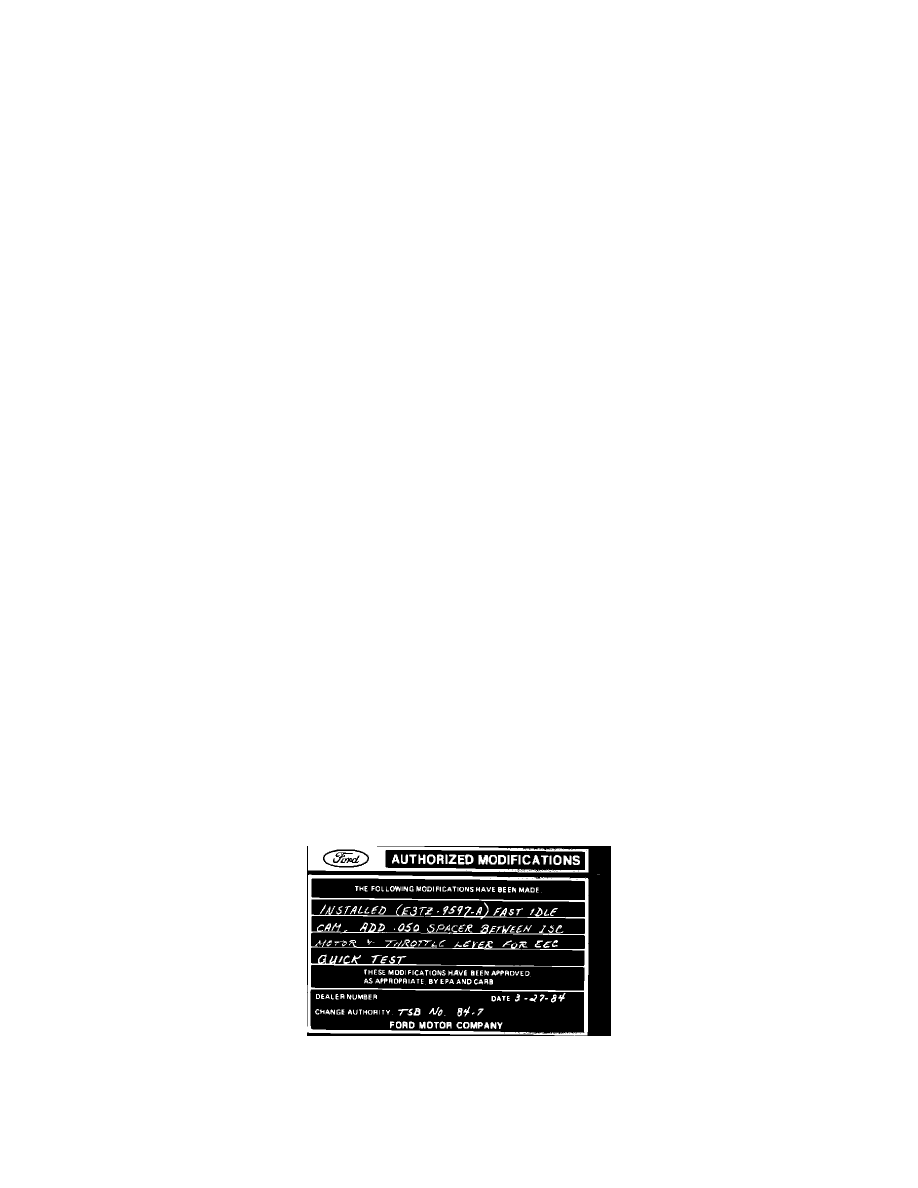Ranger 4WD V6-171 2.8L (1983)

Idle Speed: By Symptom
Technical Service Bulletin # 84714
Date: 840327
Engine - RPM Flare When Shifting/High Idle Speeds
Article No. 84-7-14
IDLE - INTERMITTENT HIGH IDLE SPEEDS (2.8L)
LIGHT TRUCKS 1983-1/2-84 RANGER AND BRONCO II
CALIBRATIONS: All calibrations with 2.8L engine.
Higher than normal idle speeds and a RPM flare-up when shifting gears may occur on vehicles with idle speed controls.
If idle speed excursions are present with a properly set TRC screw, replace the current 2-step mechanical fast idle cam with a 4-step cam and reduce the
maximum extension of the D.C. idle speed control motor to 1200 RPM. Use the following procedure:
1.
Remove the carburetor per 1984 Truck Shop Manual, Section 24-25, page 12.
2.
Remove and replace fast idle cam with E3TZ-9597- A per Shop Manual procedure Section 24-25, pages 15-16 for automatic choke service.
a.
To check for proper fast idle cam indexing:
^
rotate choke cap 90~ rich (left).
^
cycle throttle to set choke.
^
remove hose and apply vacuum to pulldown (P/D) motor and cycle throttle again. Fast idle adjustment screw must align with the
stamped "V" on the fast idle cam. Adjust indexing screw if required.
^
replace P/D vacuum hose and re-index choke cap to proper position.
3.
Reinstall carburetor assembly per Shop Manual.
4.
Complete the fix by repeating the idle speed set procedure (1984 Car/Truck Shop Manual (H) - Emissions Diagnosis, Section 4, Page 4-79),
except in Step 8 of the procedure set engine speed to 1200 RPM (instead of 2000 RPM) with the idle speed control (ISC) bracket screw.
When conducting a EEC Quick Test on vehicles that have been modified with this service fix, it will be necessary to add a .050" spacer between the DC
idle speed control motor plunger and carburetor throttle lever. This spacer will provide the increased engine RPM necessary to properly conduct EEC
Quick Test.
NOTE:
Some engine conditions at idle will cause slight speed variations and should be recognized as normal engine behavior. These small speed
variations are due to the electronic idle speed control and may at time be perceptable to the customer. Even if perceived, these subtle speed changes are
not objectionable engine behavior. It is important that the servicing activity be aware of this idle speed control and distinguish between this and real idle
concerns identified as above. The engine conditions that will produce these normal idle speed changes are:
^
Cold engine
^
Restat (20 seconds - approximately)
^
Hot engine (above 220 ~F top water)
^
A/C on - includes defrost
^
Dashpot action
Obtain an Authorized Modifications decal and list the date, dealer number and summary of alterations performed. Select a prominent place adjacent to
the Vehicle Emission Control Information decal suitable for installing the Authorized Modifications decal. Clean the area, install the decal and cover it
with a clear plastic decal shield.
PART NUMBER
PART NAME
CLASS
